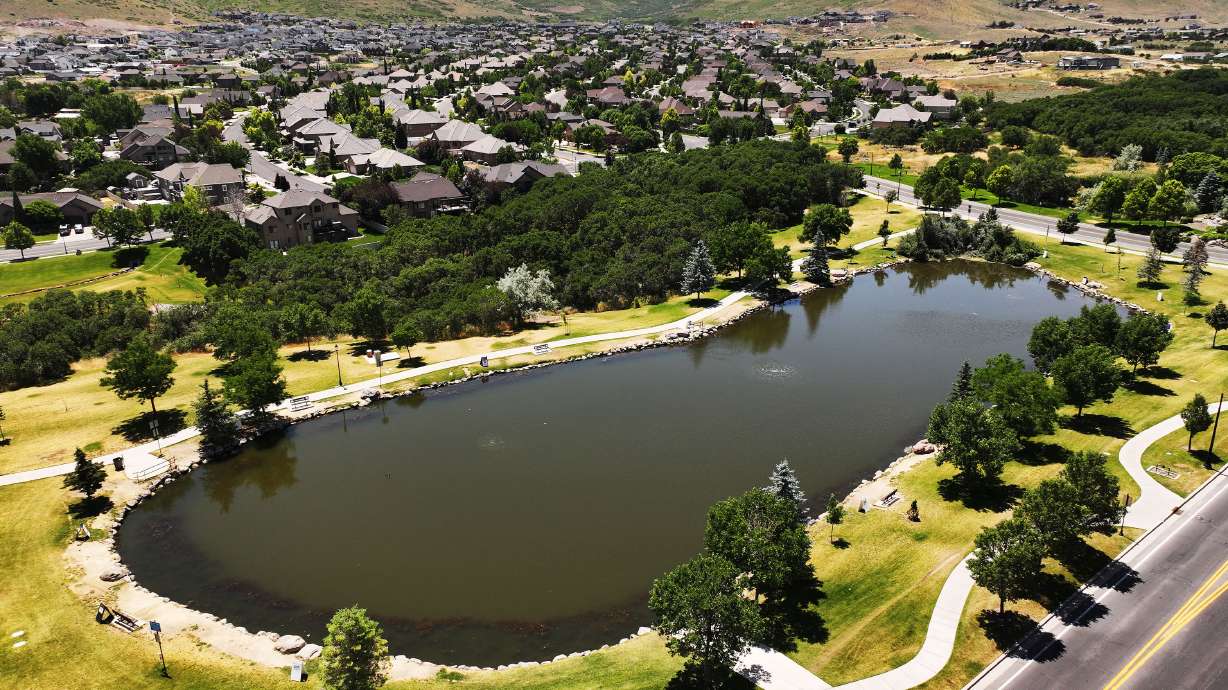Estimated read time: 2-3 minutes
This archived news story is available only for your personal, non-commercial use. Information in the story may be outdated or superseded by additional information. Reading or replaying the story in its archived form does not constitute a republication of the story.
HERRIMAN — Utah environmental officials say they now know what likely killed hundreds of fish at a popular pond in Salt Lake County earlier this summer.
The dead fish found at the community pond within The Cove at Herriman Springs in June appear to have died from the "effects of pesticides and other environmental stressors," Utah Department of Environmental Quality officials said in an update to the case on Tuesday.
"We are working with Herriman officials to understand what occurred and how it may be prevented in the future," the agency wrote in a statement to KSL.
Residents reported finding large numbers of dead fish at the pond as early as June 23. Utah Division of Wildlife Resources biologists responded to the pond the following day, where they came across an estimated 500 dead fish. Scott Root, a biologist for the agency, said they also found "lethally low levels" of dissolved oxygen in the water.
In an update Tuesday, the Utah Department of Environmental Quality — which has worked with the state wildlife officials over the past month to investigate the cause — said a pesticide had recently been applied at the pond the day before the Utah Division of Wildlife Resources stocked it with new fish.
Pesticide concentrations found in the pond were determined to be "below toxicity levels" for fish; however, the agencies believe the pesticide application likely sparked a chain reaction.
The pesticide killed off the aquatic vegetation, leaving "decomposed vegetation" in the water, state environmental officials said. At the same time, Utah's hot and dry June led to warmer pond water temperatures. Warm water contains less oxygen than cooler water.
"A combination of decomposed vegetation and warm water temperatures are factors for low dissolving oxygen concentration in the pond. The low dissolved oxygen levels in the pond likely stressed the fish, leading to the fish kill," the agency wrote.
It hasn't been restocked with new fish yet because of the ongoing summer heat and the impact that has on the water temperatures, according to Faith Heaton Jolley, a spokeswoman for the Utah Division of Wildlife Resources.
She told KSL that the division expects to restock it with catfish in late August or September, depending on water conditions from the weather.
Contributing: Shelby Lofton









